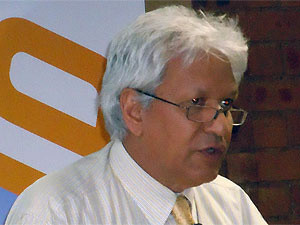
The South African National Roads Agency's (Sanral's) controversial electronic tolling on Gauteng's highways is failing, because around 60% of users are not settling their accounts.
This low compliance rate was revealed yesterday in documents handed out to coincide with the release of the 2014 budget. Although government says collections are gaining traction, the Opposition to Urban Tolling Alliance (Outa) says the low level of payments shows the system is failing.
E-tolling went live on 3 December last year, but has been marred by several "teething" problems, including lax security on Sanral's e-toll Web site and thousands of complaints around incorrect billing.
Sanral has had to explain the billing issues, which it says only affects 0.3% - around 8 000 - people using its e-roads, and complaints have been lodged about invoice issues with the public protector.
Paying up
Sanral has, so far, downplayed the problems with the system and has argued e-tolling is successful. However, it has failed to respond to specific queries around how many motorists are coughing up to drive on the tolled freeways.
Yesterday, the extent of non-compliance was finally revealed in the Department of Transport's budget vote, which was included in National Treasury's Estimates of National Expenditure.
According to the document, "the increase in receivables and prepayments to R1.7 billion in 2013/14, at an average annual rate of 72.9%, is due to increases in the number of defaulting debtors as a result of the implementation of the Gauteng freeway improvement project".
A treasury official, who cannot be named due to its policies, explains this percentage is a contingency amount and reflects the percentage of defaulters expected by the department for the full year.
The official says while higher than the initially-expected default rate of 70%, collections are improving and have moved from 70% in December to 60% currently. The state expects collections to improve to around 70% payment within three years.

The Department of Transport's budget indicates its income is expected to "grow significantly" over the next three years, because of "the anticipated full implementation of the Gauteng freeway improvement project e-tolling, which has the potential to result in improved revenue inflows".
The roads agency's CEO, Nazir Alli, has said people were signing up for e-tolls in their thousands, showing motorists are now prepared to cooperate with Sanral to make the system work.
Alli has largely blamed SA's vehicles database, the Electronic National Traffic Information System (eNatis), for the widespread billing problems Sanral has on its plate. He said issues like cloned number plates and vehicles without number plates were exacerbating the glitch. Alli said Sanral and its service provider, Electronic Toll Company, would address all the challenges identified.
Not so fast
However, Outa chairman Wayne Duvenage says the system is failing the acid test of the user-pays principle. He pegs compliance in the next three years at 40%, a far cry from government's anticipated 70%.
Duvenage says about 70% of the motorists using the freeways - a total of 2.6 million according to Sanral - do not have tags and, of these, very few people are settling their bills. He adds there are also people handing in their e-tags.
Sanral says the total number of e-tags taken up to date is around 1.2 million, with more than 500 000 individual vehicles registered since e-tolling commenced, and between 30 000 and 45 000 registrations taking place on a weekly basis.
More than 100 000 users so far registered an e-toll account via the e-toll Web site, the agency told Parliament's Portfolio Committee on Transport last week.
Outa has consistently challenged the figures and called for an investigation into e-tolls, specifically the percentage of movements under gantries to date, by day and by month.
Duvenage notes that Sanral, in court, indicated it expected around 94% compliance with invoices. He adds other systems around the world have failed to reach between 60% and 70% payment rates.
Three months down the line, about 80% of motorists should be settling their accounts for the system to be successful, says Duvenage.
Duvenage says chasing 20% of defaulters is unworkable, never mind 60%, because of the costs involved in getting the money in. "This is like trying to start a race in quicksand; you'll never get out of the bog."
Share